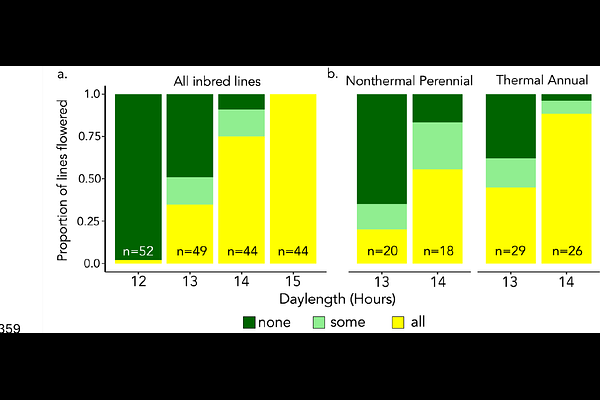Novel major loci shape habitat-associated flowering time variation in Yellowstone monkeyflowers

Novel major loci shape habitat-associated flowering time variation in Yellowstone monkeyflowers
Berg, C. S.; Cherne-Hendrick, M.; Kolis, K.; Stebbins, K.; Finseth, F.; Fishman, L.
AbstractPlants harbor remarkable genetic diversity in flowering phenology, particularly in their responses to environmental cues such as photoperiod. Understanding the genetic basis of repeated evolution in flowering cues, which are key to reproduction, illuminates adaptation with gene flow and parallel evolution. We characterized variation in minimum critical daylength for flowering (MCD) in yellow monkeyflower (Mimulus guttatus) accessions from a geothermal soil mosaic in Yellowstone National Park, mapped loci underlying the most extreme MCD in focal thermal annuals, and investigated environmental variables shaping phenology in the field. Yellowstone monkeyflowers range in MCD from 12-15 hours, paralleling range-wide variation in M. guttatus; plants from thermal habitats flower under significantly shorter daylengths. Two QTLs govern the most extreme 12-hour MCD. Both contain candidates from gene families previously implicated in phenological evolution in monkeyflowers and other angiosperms, but the major loci appear novel. The frequency of 12-hour flowering across a microgeographic gradient is predicted by variation in soil temperature and the timing of dry-down. Adaptation to Yellowstone\'s geothermal soil mosaic has generated dramatic evolution of flowering cues over short spatial scales. The genetic basis of 12-hour flowering does not indicate re-use of known M. guttatus alleles, but strong candidate genes nonetheless suggest molecular parallelism.